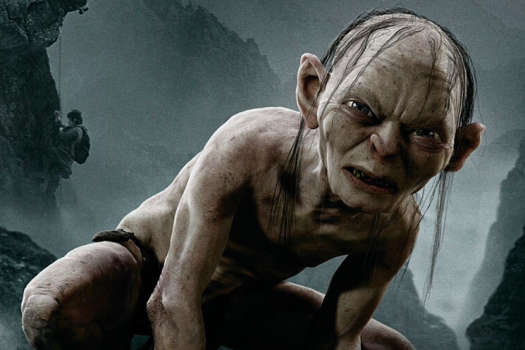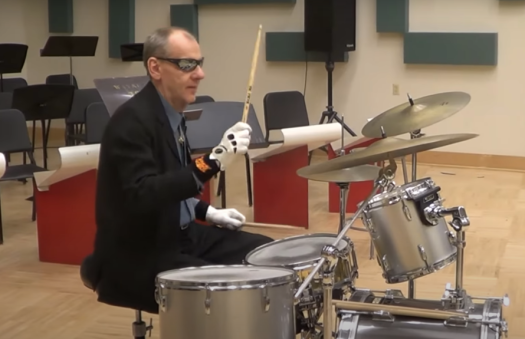Only a pair of telepathic twins could conjure up such neatly woven tales as the ones found on Tasseomancy. Tasseomancy is the debut record from Halifaxs Ghost Bees (a duo consisting of Romy and Sari Lightman), which tells the life story of the musicians great, great grandmother. The record follows in the same vein as the Acorns latest, Glory Hope Mountain (front-man Rolf Klausener penned that record as a sort of tribute to his mothers childhood), all while incorporating similar vocal styles and fantastic imagery as Joanna Newsoms acclaimed Ys. On Tasseomancy, gentle folk harmonies flow in and out of Ghost Bees lyrical velour, relating the trials and tribulations experienced by the their tealeaf-reading ancestor and her bleak, unfortunate encounters with chance. "Vampires Of The West Coast leads the album into lost and lonely territory, while "Erl King highlights the twins striking vocal harmonies. "Goldfish And Metermaids closes the record, leaving the listener in limbo between this world and one wrought with superstition and despair. Theres no need to visit the local bookstore this year when youve got twin bards like Ghost Bees, all your daydreaming needs are covered.
Whats it like being a telepathic twin?
Sari Lightman: We get asked that quite a bit. For me, when I say that were "telepathic, it means we have this ability to communicate non-verbally. Its reassuring, in some ways, to have that sort of connection with my sister, but it can also be a bit evasive at times, having someone who listens to your thoughts and knows your demons. I dont really know otherwise, though; Ive always had that other person there.
Was Tasseomancy one of those joint ventures that didnt require any discussion because you knew what each other was thinking?
Yeah, definitely. The ideas and concepts for the album took a while to evolve and emerge over three years. When we started recording, we had different ideas and different songs but by the end, we were definitely thinking on the same wavelengths about what we wanted to create and where we wanted the album to go.
Tasseomancy features some astounding lyrical work. What fuels your storytelling?
The cover is a photograph of our great, great grandmother. Its her story of coming over to Canada and dealing with the hardships of finding a new homeland and living in a village where pilgrims killed her family. A lot of our songs come from our ancestry, but they also derive a lot from historical experiences, obviously none that weve personally encountered.
What inspired you to write about your great, great grandmother?
We only heard about her story in the past three years or so, and I dunno, we just felt that she had this life as a tealeaf reader thats what tasseomancy means and all-around creative person who, just from the circumstances of her own life, didnt get the chance to become or evolve into the person she couldve been. Tasseomancy is kind of our way of paying tribute and paying homage to her.
How would you categorise your songs?
I really think theyre stories for everyone. A lot of the ideas that were writing about are history book stuff but there are still notions of dark fairytales in them. I read a lot of those dark kinds of tales at a very, very young age. My moms a librarian and my dads really into comic books and horror movies, so they became embedded in us since we were kids. A lot of the stories we sing about are based on what we were exposed to when we were young, so I think anyone can hear them and feel something from them.
Your music also tells a story, winding along every path your lyrics take. When you wrote your songs, did the lyrics come before the music?
Most of the songs were definitely concepts before the music came across. I would have an idea of something I wanted to write about and definitely the music came afterwards. Because the lyrics were so primary, they played a fundamental role in creating the songs, so I think the melodies just kind of followed along afterwards.
Your album reminds me a lot of Joanna Newsoms fantastical, imagery-laden songs. Who would you say your influences are?
Weve been getting a lot of those comparisons. Obviously what Joanna Newsom does in a sort of cabaret/experimental/contemporary folk music category is pretty great, but shes also tapping into something like we are. I feel more influenced by literary figures and authors than musicians. I guess Leonard Cohen is a pretty big influence of mine, as well as Flannery OConnor and other grotesque storytellers that can convey these beautiful images that are dark. Also, older Hungarian and Eastern European and traditional folk songs have been an influence for us.
What kind of research did you have to do to write this album?
My grandmother definitely helped a lot when writing Tasseomancy. I also did a bunch of research on the historical significance of what was happening in Russia and what it was like to immigrate to Canada at the turn of the century. There is a lot of consciousness that went into the songs but at the same time, I kind of disregarded it a little bit because I didnt want the songs to come off too objectively. But its nice to have that background.
Do you and your sister plan on making another album in the same vein, one that will tell the story of someones life?
Oh, yeah, I think so. For our next album, we definitely want it to be pretty conceptual. We dont know what well do yet but it will probably be in the same vein of storytelling.
(Youth Club)Whats it like being a telepathic twin?
Sari Lightman: We get asked that quite a bit. For me, when I say that were "telepathic, it means we have this ability to communicate non-verbally. Its reassuring, in some ways, to have that sort of connection with my sister, but it can also be a bit evasive at times, having someone who listens to your thoughts and knows your demons. I dont really know otherwise, though; Ive always had that other person there.
Was Tasseomancy one of those joint ventures that didnt require any discussion because you knew what each other was thinking?
Yeah, definitely. The ideas and concepts for the album took a while to evolve and emerge over three years. When we started recording, we had different ideas and different songs but by the end, we were definitely thinking on the same wavelengths about what we wanted to create and where we wanted the album to go.
Tasseomancy features some astounding lyrical work. What fuels your storytelling?
The cover is a photograph of our great, great grandmother. Its her story of coming over to Canada and dealing with the hardships of finding a new homeland and living in a village where pilgrims killed her family. A lot of our songs come from our ancestry, but they also derive a lot from historical experiences, obviously none that weve personally encountered.
What inspired you to write about your great, great grandmother?
We only heard about her story in the past three years or so, and I dunno, we just felt that she had this life as a tealeaf reader thats what tasseomancy means and all-around creative person who, just from the circumstances of her own life, didnt get the chance to become or evolve into the person she couldve been. Tasseomancy is kind of our way of paying tribute and paying homage to her.
How would you categorise your songs?
I really think theyre stories for everyone. A lot of the ideas that were writing about are history book stuff but there are still notions of dark fairytales in them. I read a lot of those dark kinds of tales at a very, very young age. My moms a librarian and my dads really into comic books and horror movies, so they became embedded in us since we were kids. A lot of the stories we sing about are based on what we were exposed to when we were young, so I think anyone can hear them and feel something from them.
Your music also tells a story, winding along every path your lyrics take. When you wrote your songs, did the lyrics come before the music?
Most of the songs were definitely concepts before the music came across. I would have an idea of something I wanted to write about and definitely the music came afterwards. Because the lyrics were so primary, they played a fundamental role in creating the songs, so I think the melodies just kind of followed along afterwards.
Your album reminds me a lot of Joanna Newsoms fantastical, imagery-laden songs. Who would you say your influences are?
Weve been getting a lot of those comparisons. Obviously what Joanna Newsom does in a sort of cabaret/experimental/contemporary folk music category is pretty great, but shes also tapping into something like we are. I feel more influenced by literary figures and authors than musicians. I guess Leonard Cohen is a pretty big influence of mine, as well as Flannery OConnor and other grotesque storytellers that can convey these beautiful images that are dark. Also, older Hungarian and Eastern European and traditional folk songs have been an influence for us.
What kind of research did you have to do to write this album?
My grandmother definitely helped a lot when writing Tasseomancy. I also did a bunch of research on the historical significance of what was happening in Russia and what it was like to immigrate to Canada at the turn of the century. There is a lot of consciousness that went into the songs but at the same time, I kind of disregarded it a little bit because I didnt want the songs to come off too objectively. But its nice to have that background.
Do you and your sister plan on making another album in the same vein, one that will tell the story of someones life?
Oh, yeah, I think so. For our next album, we definitely want it to be pretty conceptual. We dont know what well do yet but it will probably be in the same vein of storytelling.




